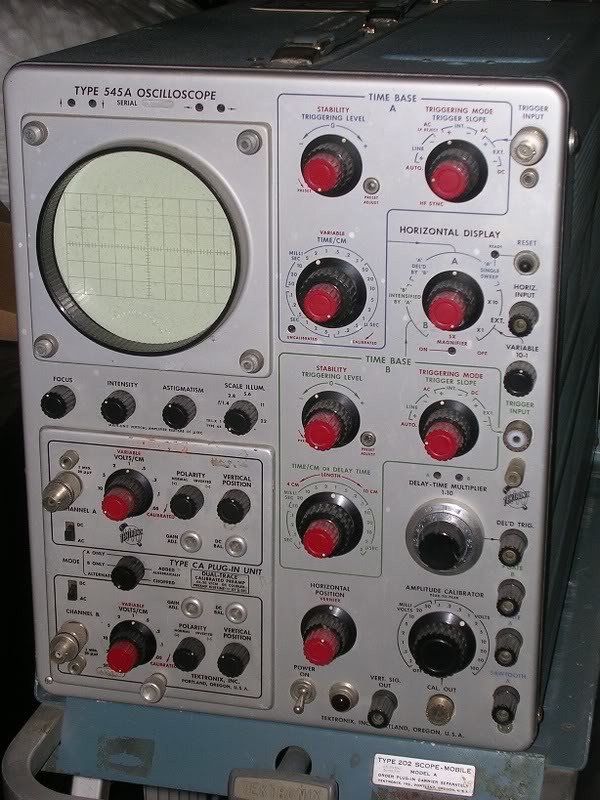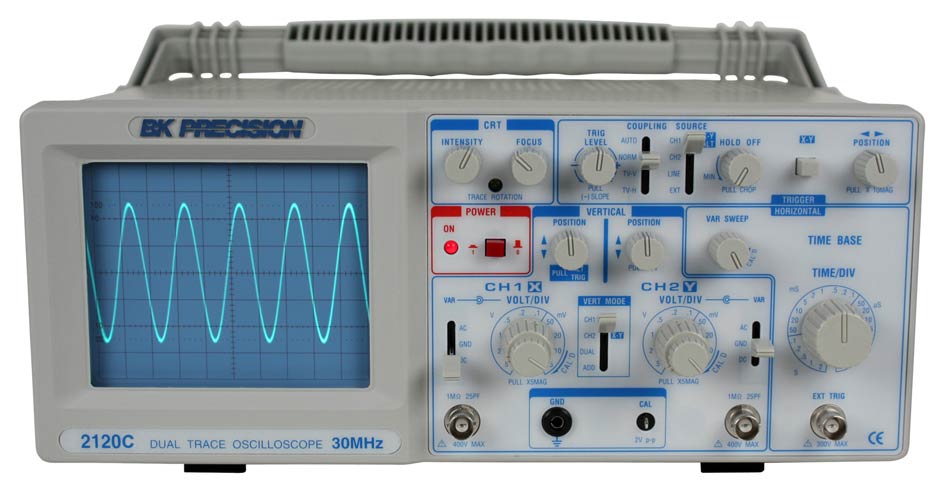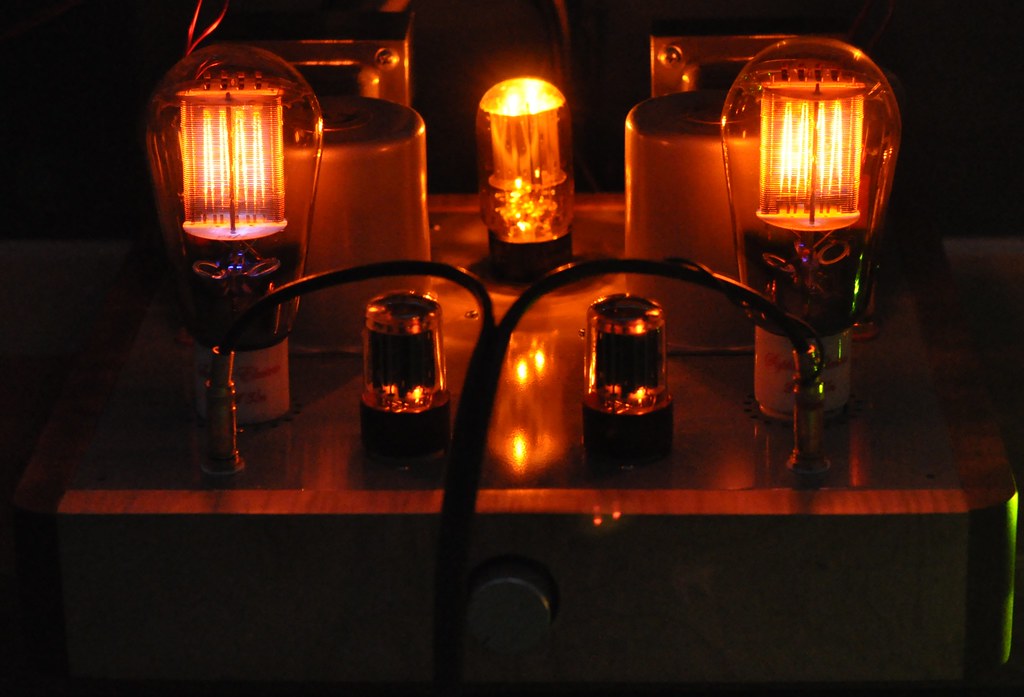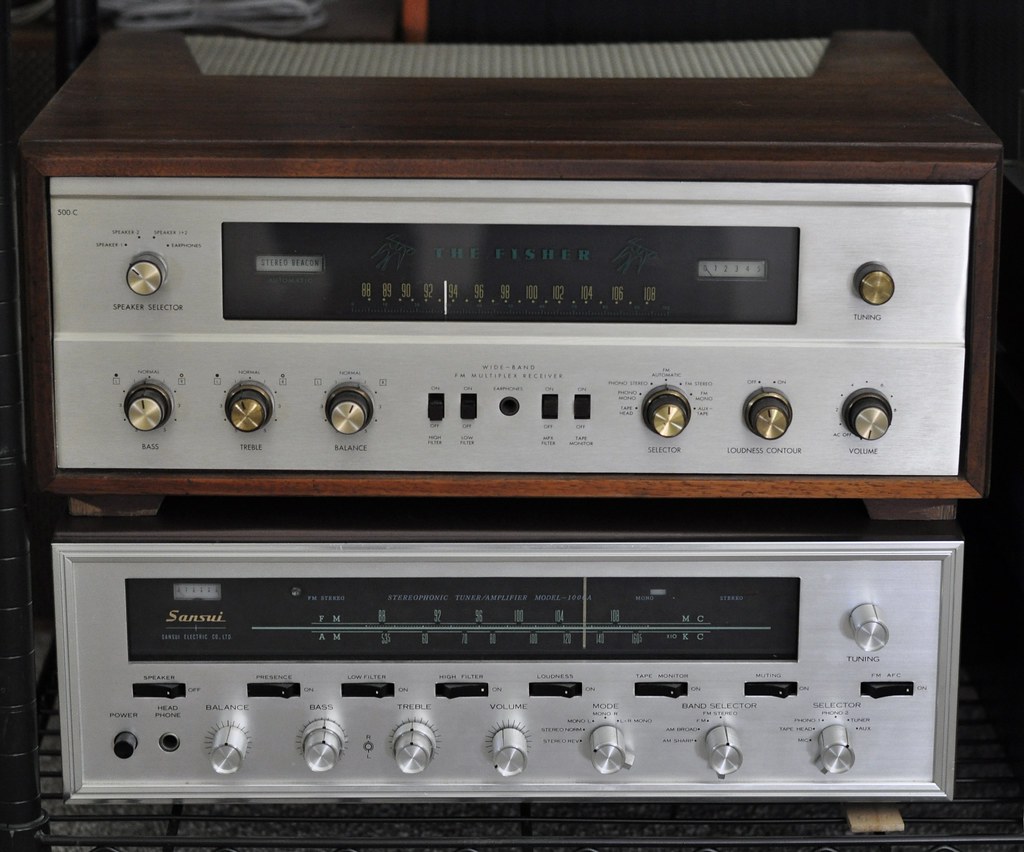Oscilloscope, looking at buying this one..BK PRECISION 2120C..

VSAT88
Posts: 1,297
in Electronics
I found this oscilloscope, a BK PRECISION 2120C for a totally affordable price. Does anyone know more than I do that could tell me if I could use this without a problem to repair vintage amplifiers receivers, pre amps ? I know little to nothing about using a scope however I want one to learn more and be able to do more repair work. Thanks.
Comments
-
Before spouting off :- ) let me say that I am far from expert about, or about using, oscilloscopes. I am barely competent, but that's about it.
First & foremost, there's a fine assortment of basic literature available as scans from Pete Millet's wonderful site, at http://www.tubebooks.org/technical_books_online.htm (scroll down a ways & you'll find 'em).
There's also a nice, far more modern primer from Tektronix called "The ABCs of XYZ"
http://www.tek.com/learning/oscilloscope-tutorial
Now, in terms of the scope you asked about. I don't know that particular model, but chances are, yes. Truth is, unless one is working on FM radios (tuner sections), you don't need much bandwidth at all. even 200 kHz is adequate for hifi (ex-radio), a classic 5 MHz "color TV serviceman's" (and they were probably all "men" in those long-ago times) oscilloscope is adequate for FM radio alignment*. Anything else is overkill for analog hifi/audio/radio.
What you DO need is good linearity in both x and y axis amplifiers and good calibration. The B&K scope should be OK -- we're not talking Tektronix or HP, but decent TV repair-grade equipment. Heck, my father had a 1.5 MHz Precision (long, long before they merged with B&K) scope when I was a wee lad (late 1950s vintage)!
Also consider that modern color LCD screen scopes are small and inexpensive. I don't know how tough, nor how reliable they are, though.
I am kind of a 'scope Luddite, though, myself -- just like everything else :- ) tek310A by Mark Hardy, on Flickr
tek310A by Mark Hardy, on Flickr 545A by Mark Hardy, on Flickr
545A by Mark Hardy, on Flickr -
heh, just looked up your scope -- yes, heck, that looks like a b!tchen piece of test equipment! 30 MHz dual bandwidth, dual trace. That's a terrific scope for hifi. Dual trace is great; you can look at the input and output waveform of an amplifier stage, e.g.
If it's totally affordable and in good working order -- well, it looks good to me!
That's a fine looking scope. Fairly simple (it's all relative) compared to a "laboratory" scope; should be pretty easy to learn to use for hifi. -
Smoking! Thanks a million.. I need to know what leads to buy for it as well ..100mhz, 200mhz, 500mhz?
-
Depends on what you really want to use it for. Given that it's a 30 MHz scope, I would think that 100 MHz bandwidth cables would be more than adequate.
-
Depending upon what kind of operating voltages you plan on looking at with the 'scope you might want a 10:1 reduction probe. That way if you're working with higher voltages in a tube amp you won't overload the 'scope's input. For transistor gear it wouldn't be a problem.
-
I may well look at tube gear with it however at this point probably transistor gear only.. At least until i can learn how to work it.. I did order it (145.00) and it looks just like new. Thanks to everyone for the help i am sure i will be asking many more questions!
-
KennethSwauger wrote: »Depending upon what kind of operating voltages you plan on looking at with the 'scope you might want a 10:1 reduction probe. That way if you're working with higher voltages in a tube amp you won't overload the 'scope's input. For transistor gear it wouldn't be a problem.
heh -- good call; didn't even think about HV usage... just sort of assumed soiled state. -
Well, its on the way and a pair of 100mhz leads/probes..I will be back after it comes in..
-
For other readers:
When working with audio circuits, two different types of O-scopes are useful:
a] High resolution computer based digital scopes. For examining in-band audio signals. Say below 50 kHz.
b] High frequency O-scopes. For examining out of band noise, interference and ringing. Say 30 MHz or more. -
mhardy6647 wrote: »[quote="... just sort of assumed soiled state.
IMO Soiled State Amplifiers Stink!.................[my apologies for that!] -
I feel pretty much the same way...
 DSC_0263 by Mark Hardy, on Flickr
DSC_0263 by Mark Hardy, on Flickr
Well, let me put it like this -- the (ahem) soiled state amplifiers I like... I cannot come even close to being able to afford.
-
Pretty much mimics my sentiments on tubes-I've always admired the linearity and soothing warmth of glowing tubes. But the examples I want are all beyond my pay grademhardy6647 wrote: »
Well, let me put it like this
-
I kinda like my Dynaco ST 70 as well as my Fisher 500 C. Neither were that terrible high $ wise. Both sound just fine to me but for the right $ I would part with either one. I have ran the ST-70 to the SDA 2Bs with fine results, Just no really high volumes. And as far as that goes I have a DH-220 that is completely bone stock from day one (besides the power switch) that sounds great to me. It seems to me that some days I like The tubes better and some days I like the integrated amps better...I think it best if I keep both.. I do not have over 600.00 in any one piece of equipment. I can't afford to have as much equipment to work on and trade in and out of my system if I was to pay too much more that that. In fact that is a stretch $ wise..
-
500C's a nice piece. Mine's in the bullpen, always ready to go; "put me in, coach!"
 DSC_9817 by Mark Hardy, on Flickr
DSC_9817 by Mark Hardy, on Flickr
Not a big fan of the stock Dynaco ST-70 -- but the output iron's quite good (as was that in all Dynaco products AFAIK) and there's long been a cottage industry of reworks and upgrades for the original design.
The only ST-70 at my house is not a Dynaco. DSC_0198 by Mark Hardy, on Flickr
DSC_0198 by Mark Hardy, on Flickr
(ST-70 on the left, ST-40 on the right)
Sorry, off-topic of sillyscopes now :-/
-
mhardy6647 wrote: »500C's a nice piece. Mine's in the bullpen, always ready to go; "put me in, coach!"
 DSC_9817 by Mark Hardy, on Flickr
DSC_9817 by Mark Hardy, on Flickr
Not a big fan of the stock Dynaco ST-70 -- but the output iron's quite good (as was that in all Dynaco products AFAIK) and there's long been a cottage industry of reworks and upgrades for the original design.
The only ST-70 at my house is not a Dynaco. DSC_0198 by Mark Hardy, on Flickr
DSC_0198 by Mark Hardy, on Flickr
(ST-70 on the left, ST-40 on the right)
Sorry, off-topic of sillyscopes now :-/
I don't think it's off topic at all, a sillyscope fits a Eico. I need to know everything about every piece of equipment that an ocilliscope ever fit so if i run across that equipment I can burn a resistor out in it as well as the one i just smoked out in this Marantz 4140 I was "fixing"..lordy.. -
I used to have an EICO oscilloscope, but it needed a rehab (terrible waveform nonlinearity, due to ancient electrolytics, I suspect) so it's gone away.
 DSC_1559 by Mark Hardy, on Flickr
DSC_1559 by Mark Hardy, on Flickr
Actually, come to think of it, I still do. This one's an EICO but it's an OEM version -- actually I suppose it was a kit assembled as part of a "correspondence school" style course from "RCA Institute".
-
Got it and the 100mhardy6647 wrote: »heh, just looked up your scope -- yes, heck, that looks like a b!tchen piece of test equipment! 30 MHz dual bandwidth, dual trace. That's a terrific scope for hifi. Dual trace is great; you can look at the input and output waveform of an amplifier stage, e.g.
If it's totally affordable and in good working order -- well, it looks good to me!
That's a fine looking scope. Fairly simple (it's all relative) compared to a "laboratory" scope; should be pretty easy to learn to use for hifi.
Its like brand new, I cant find a scratch on it anywhere. I feel like I stole it. I have about 155.00 in it leads and all. Its all set up on the workbench with my Simpson 467 True RMS sitting right on top. Even though I don't know how to use it it looks mighty cool ! I am learning. I made myself a dummy load from some 8 ohm Dale non inductive resistors and an old Kenwood amps heat sink. They should be good to 200 watts, we will see. All I really care to do is see if an amp is oscillating (clipping I think is what its called ?) and set idle current I guess. I am not exactly sure what all I can do with it but I have always wanted one to learn and now that I have time and a dedicated shop for nothing but Hi Fi I could not be happier ! Any suggestions let them fly. Oh, BTW. I have not bought anything to look at tube amps (the 10:1 reduction probe Kenneth spoke of) as I would like to learn a bit more before I start probing around in those High Voltage Rock N Roll circuits .
